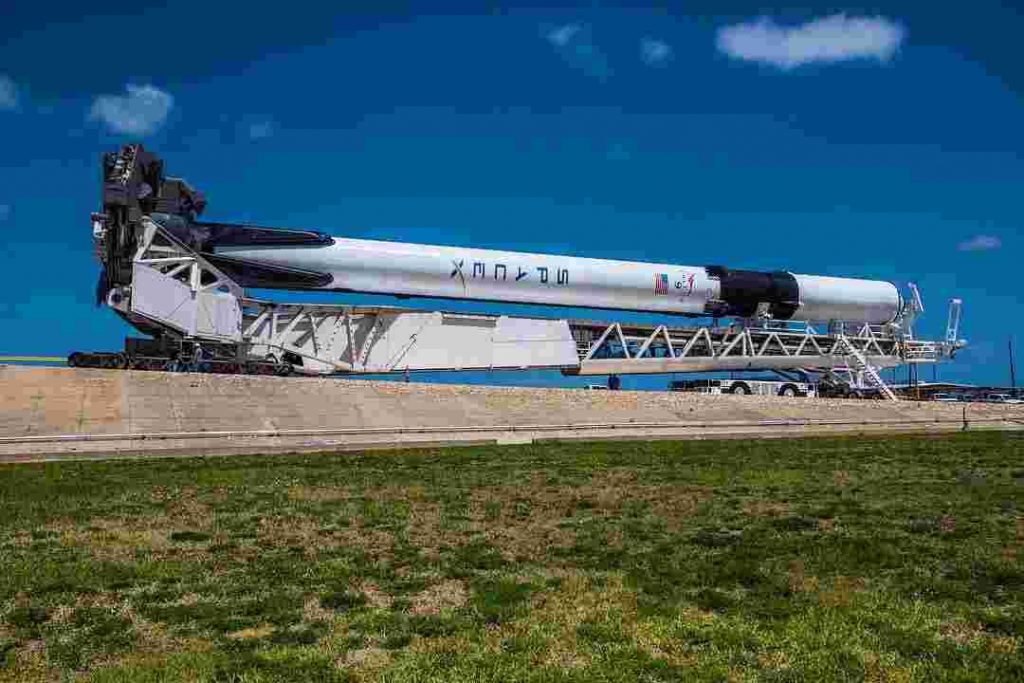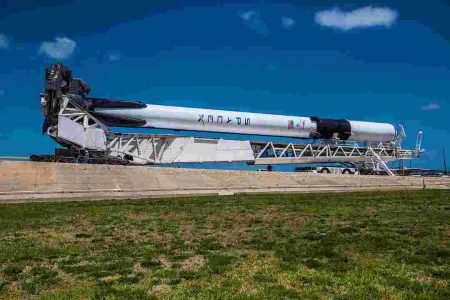May 15, 2018 – What you see is what you get with the Falcon 9 rocket going forward stated Elon Musk after the May 11 launch of a Bangladesh telecommunications satellite. The version of Falcon is known as the Block 5. SpaceX intends to build between 30 and 40 first stage rocket cores to support 300 missions to be flown in the next 5 years. Musk predicted that in 2019 a Falcon 9 Block 5 will be relaunched in a 24-hour turnaround cycle.
For Falcon 9, this is the beginning of its end of life and a remarkable success story. The first rocket to launch and recover its first stage. The first rocket to be reused in subsequent missions. And the first rocket to reduce the cost of getting to space so dramatically that it is disrupting the industry in remarkable ways and driving competition to reusability to try and match SpaceX’s achievement.
In the Block 5 version of the Falcon 9, the nine first-stage engines saw improvements to the amount of thrust each could produce upon launch as well as reusability. Previous first stage Falcons theoretically could be reflown up to 10 times with significant refurbishment. In reality, however, the Falcons have only flown twice before retirement. But now Falcon first stages will fly ten times with no refurbishment requirements (Musk says they are designed to be reflown up to 100 times). Once on the ground, the Falcons will be refueled and ready to go again.
The Falcon second stage also has undergone performance improvements in Block 5 increasing both thrust and payload capacity. As of this moment, there is no plan in place to recover and reuse these second stages.
SpaceX is also using carbon fiber extensively in its rocket core and has also developed a hydrophobic thermal protection to further enhance reusability without refurbishment.
One of the reasons for all of this strengthening and efforts to increase reusability of Falcon 9 is the upcoming human crew missions to the International Space Station (ISS) using a SpaceX-designed Dragon 2.0 capsule, an updated version of the recoverable Dragon cargo capsule flown to date on resupply missions.
To meet NASA’s human crew safety standards the Merlin engines deployed in the Falcon first and second stages are constructed using what Musk calls octaweb structure. Octawebl uses bolts rather than welded aluminum in building its rockets and this means much better thermal protection and safety.
It is expected that Falcon Heavy will be a beneficiary of the Block 5 changes to Falcon 9. But additional tweaking of this rocket is very much at an end with the exception of minor improvements to thrust, or manufacturing processes.
Keeping Falcon 9 static means SpaceX can focus on the BFR, the rocket it intends to use to take humans back to the Moon, and beyond to Mars.









